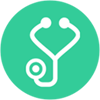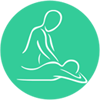5 REASONS TO CHOOSE US

ONLINE STUDY
Become an Ayurvedic Practitioner from anywhere in the world. Learn at your own pace. Join a holistic community.

EXPERIMENTAL LEARNING
Attend clinical intensives to experience herb samples, massage oils, pulse diagnosis, daily routines, and Ayurvedic cooking.

CLINICAL FOCUS
Each class is case-based so you can learn the principles of Ayurveda through real life examples.
BASIC AYURVEDIC PHARMACY COURSE (1 MONTH)
Apthasree ayurveda aims to start this basic course of ayurveda pharmacy with an intension of providing the valuable knowledge of ayurvedic preparations which can be very effective in case of preventing and curing some serious diseases in the society. Ayurveda pharmacy is called as the bhaishajya kalpana. The term bhaishajya kalpana is the combination of word baishajya and kalpana. It means that the substance through which we can come over the fear of disease. In general the term bhaishajya meant the conquest of disease, infact, it comprehence two important and vital aspects of medicine and therapiutics. Ie. 1. Preventing the promotion and preservation of health, strength and longevity in a healthy person 2. Curative - the cure of disease in the ailing and the afflicted.
Syllabus
Introduction to Ayurveda
Analysis of Basic prakruti
Basic principles of Bhaishajya kalpana (Ayurvedic pharmacology)
Rules for collection and preservation of drugs
Panchavida kashaya kalpana
Preparation of medicated oils for body and head
Preparation of medicated ghee
Preparation of herbal decoctions
Preparation of avaleha
Preparation of powders and tablets
Preparation of herbal soaps
Knowledge of shelf life of different preparations
BASIC PANCHKARMA COURSE (1 MONTH)
Apthasree ayurveda aims to start this basic panchakarma course with the mission to make the people aware of the detoxifying therapies called as ayurvedic panchakarma therapies whcich are very useful for detoxifying the body for preservation of health and purification of the body and mind which is toxified by various diseases, improper diet, improper routines and improper sleep.
Syllabus
Introduction to Ayurveda
Knowledge of basic concepts of ayurveda
Knowledge of panchakarma therapies
Perform different types of massages
- Abhyangam – mugabhyangam, siroabyangam, padabhyangam
- Elakkizhi
- Navara kizhi
Observation of panchakarma
- Vamana
- Virechana
- Vasthi – Anuvasana, Kashaya vasthi
- Nasya
- Rakthamokshana
PANCHKARMA THERAPY COURSE (3 MONTHS)
Lorem Ipsum is simply dummy text of the printing and typesetting industry. Lorem Ipsum has been the industry's standard dummy text ever since the 1500s, when an unknown printer took a galley of type and scrambled it to make a type specimen book. It has survived not only five centuries, but also the leap into electronic typesetting, remaining essentially unchanged. It was popularised in the 1960s with the release of Letraset sheets containing Lorem Ipsum passages, and more recently with desktop publishing software like Aldus PageMaker including versions of Lorem Ipsum.
Syllabus
Introduction to Ayurveda
Knowledge of basic concepts of ayurveda
Knowledge of panchakarma therapies
Theory on
- Vamana, Virechana, Vasti, Rakthamoshana
- Snehapana (Oilation therapy)
- Swedana (Sudation Therapy)
- Abhyanga (Massage)
- Pizhichil
- Navarakkizhi (poultice with rice)
- Ilakkizhi (poultice with leaves)
- Udwarthanam (Powder massage)
- Head massage
- Face Massage
- Nasya
- Treatments of eyes including nethra tharpana, nethra dhara
- Shirodhara
- Thakradhara
- Sarvanga dhara
- Preparation of some tailas (oil) for massage, powder for powder massage.
Practicals on
- Vamana, Virechana, Vasti, Rakthamoshana
- Snehapana (Oilation therapy)
- Swedana (Sudation Therapy)
- Abhyanga (Massage)
- Pizhichil
- Navarakkizhi (poultice with rice)
- Ilakkizhi (poultice with leaves)
- Udwarthanam (Powder massage)
- Head massage
- Face Massage
- Nasya
- Treatments of eyes including nethra tharpana, nethra dhara
- Shirodhara
- Thakradhara
- Sarvanga dhara
- Preparation of some tailas (oil) for massage, powder for powder massage.
BASIC AYURVEDA COURSE (1 MONTH)
Apthasree ayurveda aims to start this basic panchakarma course with the mission to make the people aware of the detoxifying therapies called as ayurvedic panchakarma therapies whcich are very useful for detoxifying the body for preservation of health and purification of the body and mind which is toxified by various diseases, improper diet, improper routines and improper sleep.
Syllabus
- Introduction to Ayurveda
- Basic concepts of ayurveda
- Knowledge of dosha, dotu, mala
- Knowledge and analysis of prakruthi(Sareerika,manasika)
- Swastha Lakshana
- Basic cncepts of agni and stages of digestion of food
- Basic concepts of anatomy physiology
- Concepts of ahara, nidra and brahmacharya(Diet, sleep and routine)
- Knowledge of dinacharya and ritucharya(Daily ad seasonal regimen)
AYURVEDA BEAUTY THERAPY COURSE (2 WEEKS)
Lorem Ipsum is simply dummy text of the printing and typesetting industry. Lorem Ipsum has been the industry's standard dummy text ever since the 1500s, when an unknown printer took a galley of type and scrambled it to make a type specimen book. It has survived not only five centuries, but also the leap into electronic typesetting, remaining essentially unchanged. It was popularised in the 1960s with the release of Letraset sheets containing Lorem Ipsum passages, and more recently with desktop publishing software like Aldus PageMaker including versions of Lorem Ipsum.
Syllabus
- Introduction to Ayurvedic beauty care
- Basic principles of ayurveda
- Body Types(Analysis of prakruti)
- Knowledge and analysis of prakruthi(Sareerika,manasika)
- Swastha Lakshana
Face tratments
- herbal cleanser
- ayurvedic face massage
- herbal steaming
- herbal scrub
- herbal facepack/mask
- acne treatments
- different types of facials
Scalp and hair treatments
- ayurvedic head massage
- dandruff treatments
- hair treatments(premature graying, brittle hair, hair fall)
- herbal shampoo & conditioner
- herbal fumigation
Eye treatments
- Anjana (special medication by which the medicine is applied on the eyelashes and also inside the eye.This is very good treatment for eye beauty and increase vision.)
- herbal eye pack
- tharpana and putapaka
(Tharpana: the barrier is prepared around the eye and medicated and oil is poured in the eye for certain period of time.Putapaka: Is same as tharpana,but the medicine is prepared by a special formulation.) - eye exercises
Hand and foot treatments
- hand and foot soaks
- hand massage
- foot massage
- herbal mask
Body treatments
- Herbal Body Wrap
- Herbal Body Scrub
- Herbal Bath
- Preparation of Herbal Bath Bags
- Herbal Body Massage
Body slimming treatments
AYURVEDIC HERBOLOGY COURSE (1 MONTH)
Lorem Ipsum is simply dummy text of the printing and typesetting industry. Lorem Ipsum has been the industry's standard dummy text ever since the 1500s, when an unknown printer took a galley of type and scrambled it to make a type specimen book. It has survived not only five centuries, but also the leap into electronic typesetting, remaining essentially unchanged. It was popularised in the 1960s with the release of Letraset sheets containing Lorem Ipsum passages, and more recently with desktop publishing software like Aldus PageMaker including versions of Lorem Ipsum.
Syllabus
Introduction to basic Principles Ayurveda
Basic concepts of dravyaguna(herbology)
Knowledge of dravya, rasa,guna, veerya, veepaka, prabhava
detailed study of 15 medicinal plants
Identification of plants
Knowledge of storage and selection of herbs
Knowledge of potency of drugs
AYURVEDA COOKING COURSE (2 WEEKS)
Lorem Ipsum is simply dummy text of the printing and typesetting industry. Lorem Ipsum has been the industry's standard dummy text ever since the 1500s, when an unknown printer took a galley of type and scrambled it to make a type specimen book. It has survived not only five centuries, but also the leap into electronic typesetting, remaining essentially unchanged. It was popularised in the 1960s with the release of Letraset sheets containing Lorem Ipsum passages, and more recently with desktop publishing software like Aldus PageMaker including versions of Lorem Ipsum.
Syllabus
- Introduction and basic principles of ayurveda
- Basic principles of ayurvedic diet and nutrition
- Knowledge of different herbs and spices used in ayurvedic cooking
- Preparation of different kinds of healthy recepies according to ayurveda
- Knowledge of home remedies with ayurveda herbs and spices
AYURVEDIC DIET MANAGEMENT (2 WEEKS)
Lorem Ipsum is simply dummy text of the printing and typesetting industry. Lorem Ipsum has been the industry's standard dummy text ever since the 1500s, when an unknown printer took a galley of type and scrambled it to make a type specimen book. It has survived not only five centuries, but also the leap into electronic typesetting, remaining essentially unchanged. It was popularised in the 1960s with the release of Letraset sheets containing Lorem Ipsum passages, and more recently with desktop publishing software like Aldus PageMaker including versions of Lorem Ipsum.
Syllabus
- Introduction and basic principles of ayurveda
- Analysis of prakruthi (Sareerika & Manasika)
- Concept of agni and stages of digestion
- Knowledge of eating principles
- Diet and nutrition according to our prakruthi & dosha
- Knowledge of yogic diet – satwika, rajasika and thamasika food
AYURVEDIC DIET MANAGEMENT (2 WEEKS)
Lorem Ipsum is simply dummy text of the printing and typesetting industry. Lorem Ipsum has been the industry's standard dummy text ever since the 1500s, when an unknown printer took a galley of type and scrambled it to make a type specimen book. It has survived not only five centuries, but also the leap into electronic typesetting, remaining essentially unchanged. It was popularised in the 1960s with the release of Letraset sheets containing Lorem Ipsum passages, and more recently with desktop publishing software like Aldus PageMaker including versions of Lorem Ipsum.
Syllabus
- Case study
- Clinical exposure to different cases
- Case discussion along with our expert doctors panel
- Panchakarma theatre visit
- Assist and perform hands on practice on treatments
- Participation in in-house medicine preparation

